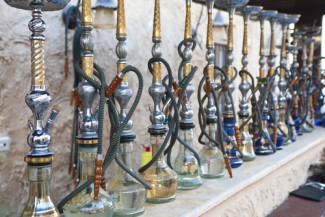Taking a Stand: An Untapped Strategy to Reduce Waterpipe Smoking in Adolescents

Waterpipe smoking (otherwise known as shisha, hookah, narghile, goza, and hubble bubble ) is an increasing global health concern with evidence suggesting particularly high prevalence amongst adolescents.
Despite clear evidence for the negative impact of waterpipe smoking, it remains unclear how young people perceive the potential harm.
A recent qualitative study, published in the Journal of Substance Use and Misuse, has explored adolescents’ attitudes and perceptions towards waterpipe smoking.
The focus group interviews were conducted among 37 Swedish adolescents from grades 10 to 12.
On analysis of the interviews, six themes emerged:
- Taking a stand- People had to choose not to smoke and be strong to hold their own opinion. Waterpipe smoking is not only danger for your own health but also for others via secondhand smoke. There was awareness about the negative aspects of tobacco industry.
- Weighing the risks- Considering the consequences of smoking waterpipe, especially long-term consequences
- Lack of knowledge- Not knowing the facts gets in the way of deciding whether or not to smoke waterpipe
- Social context- Smoking waterpipe is a social activity
- Waterpipe new and unknown- Waterpipe perceived as different and exotic. Some people were curious and felt it was cool and alternative.
- Family influence- too much control from parents can push students to smoke. Culture and tradition may influence waterpipe use
Overall the discussions provided insight into why some people choose to smoke waterpipe and why some young people refraint. Of note, there did seem to be lack of clarity about the potential harm suggesting there needs to be greater effort in delivering accurate messages so that young people can make informed choices.
